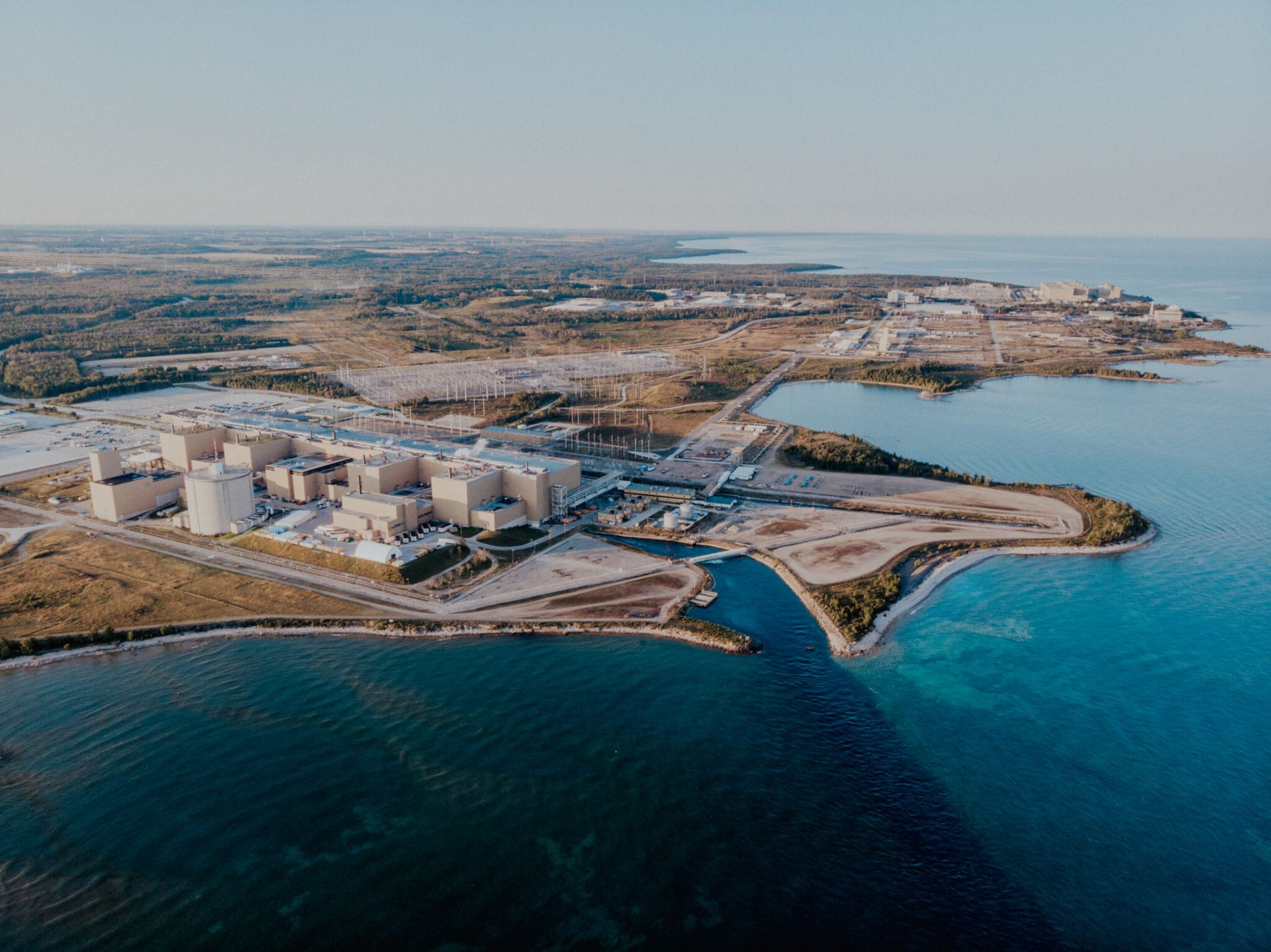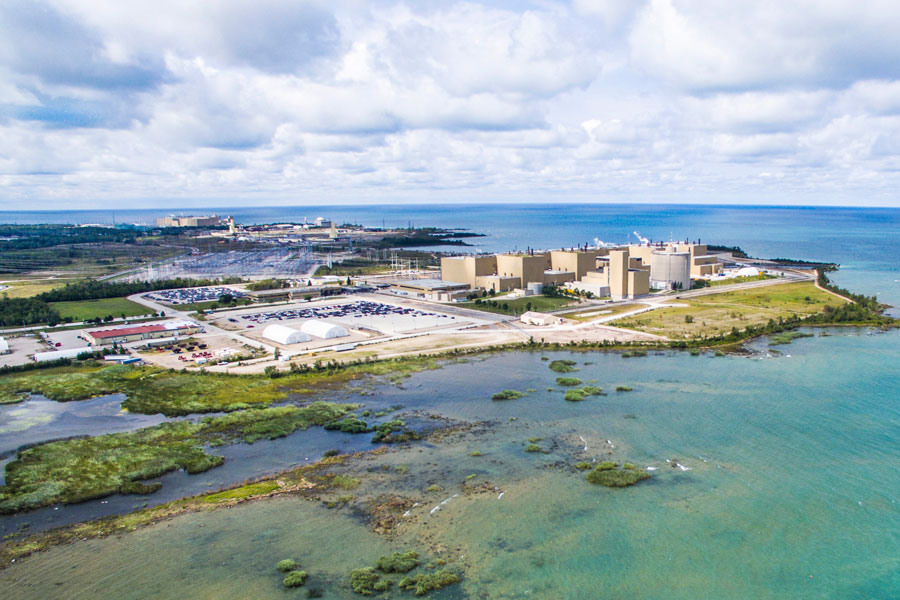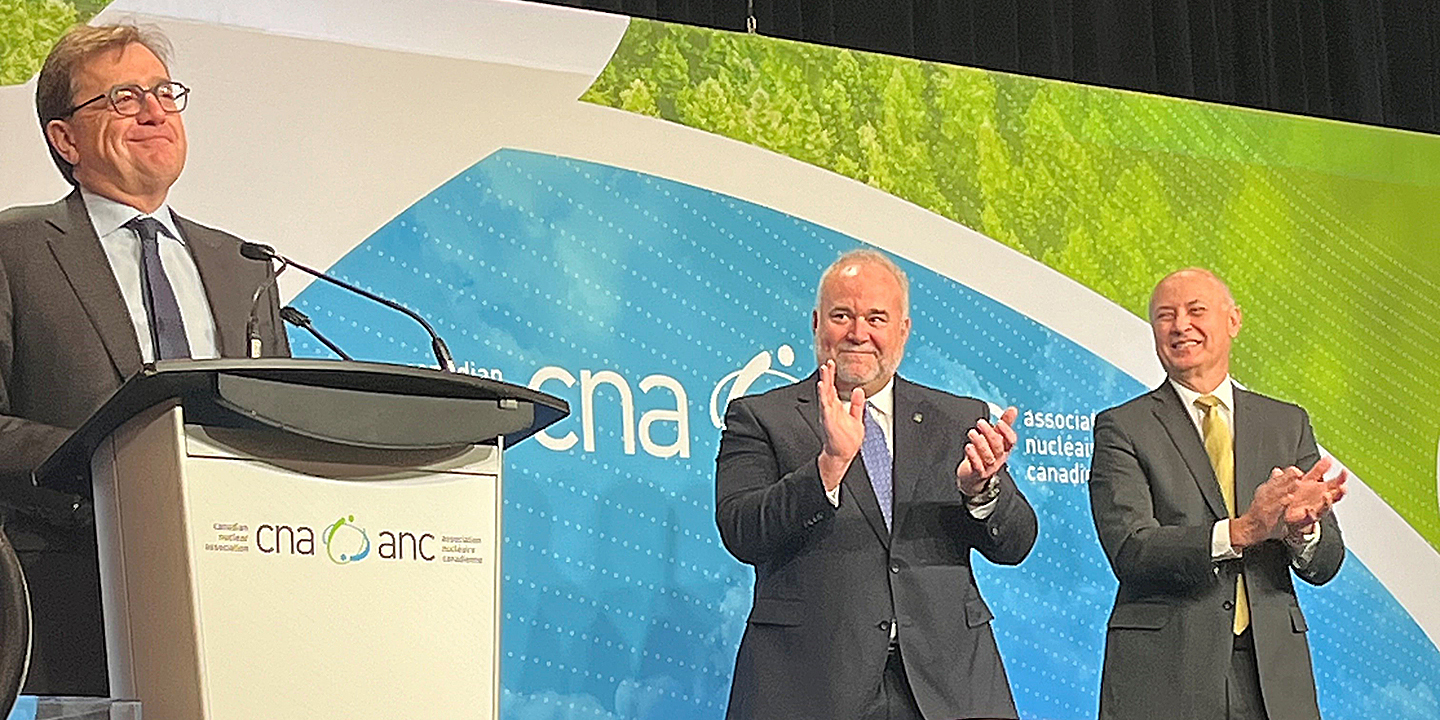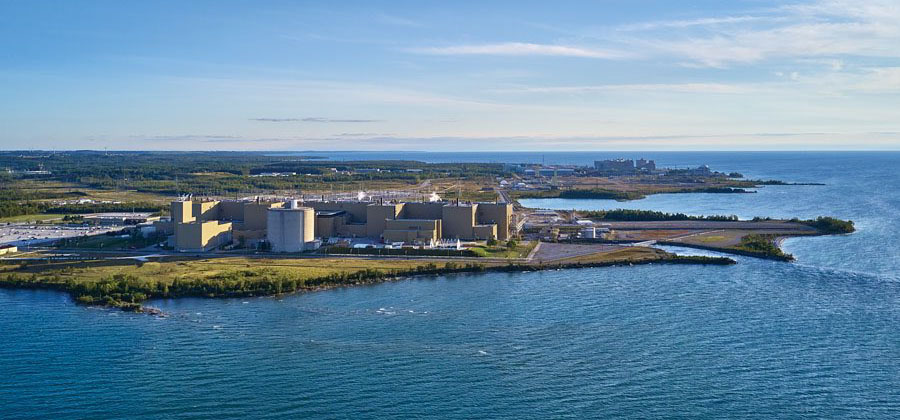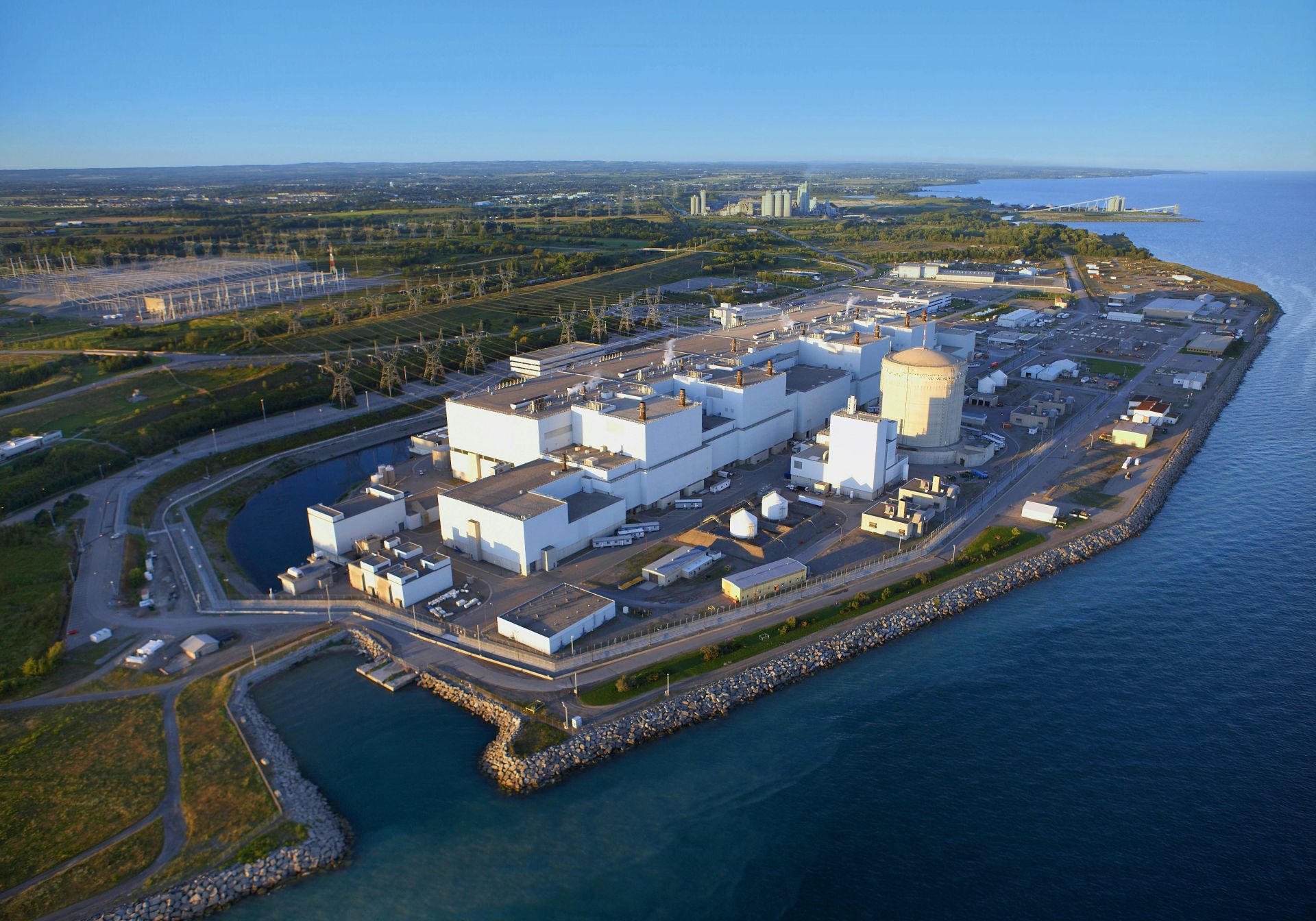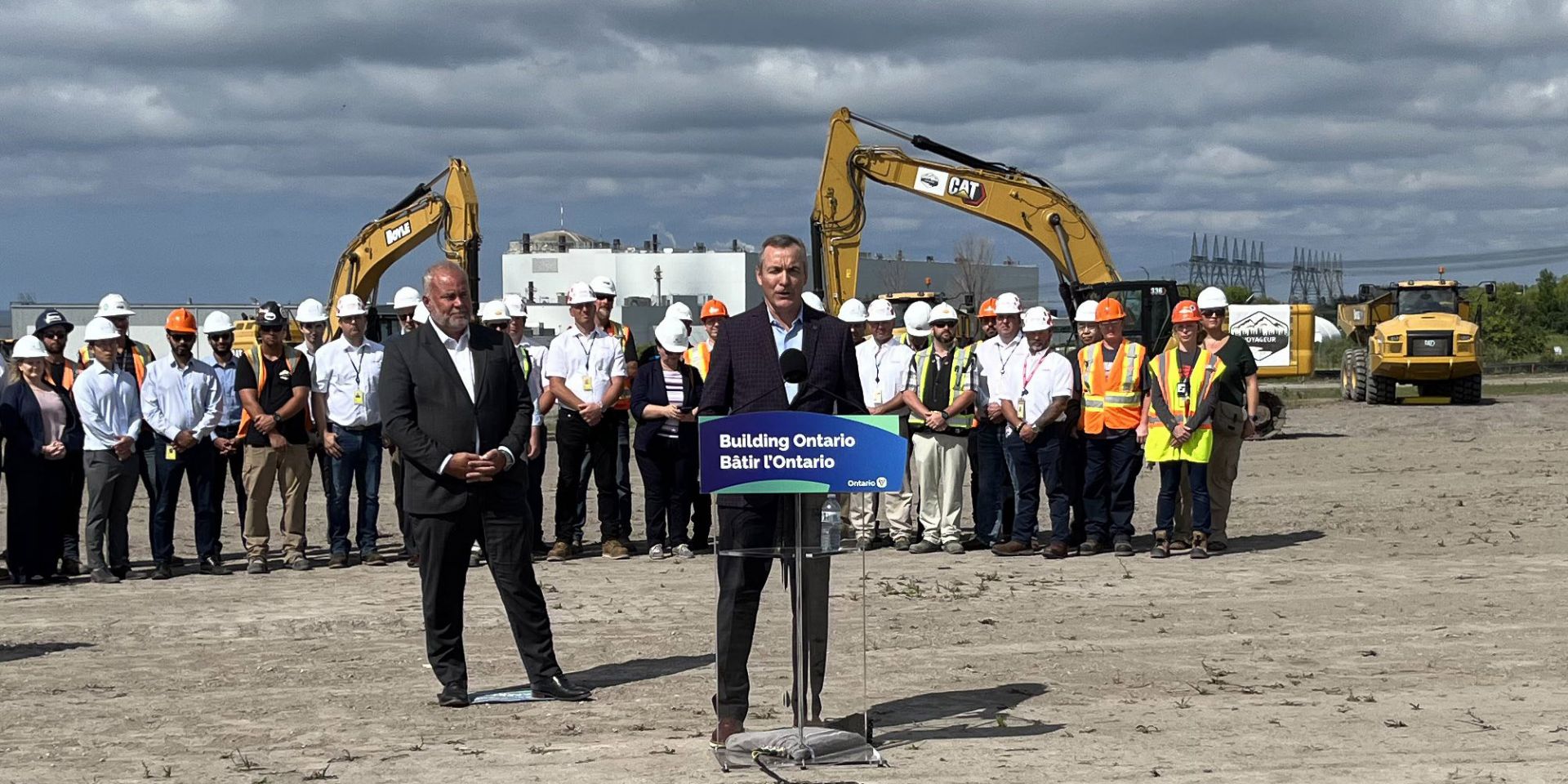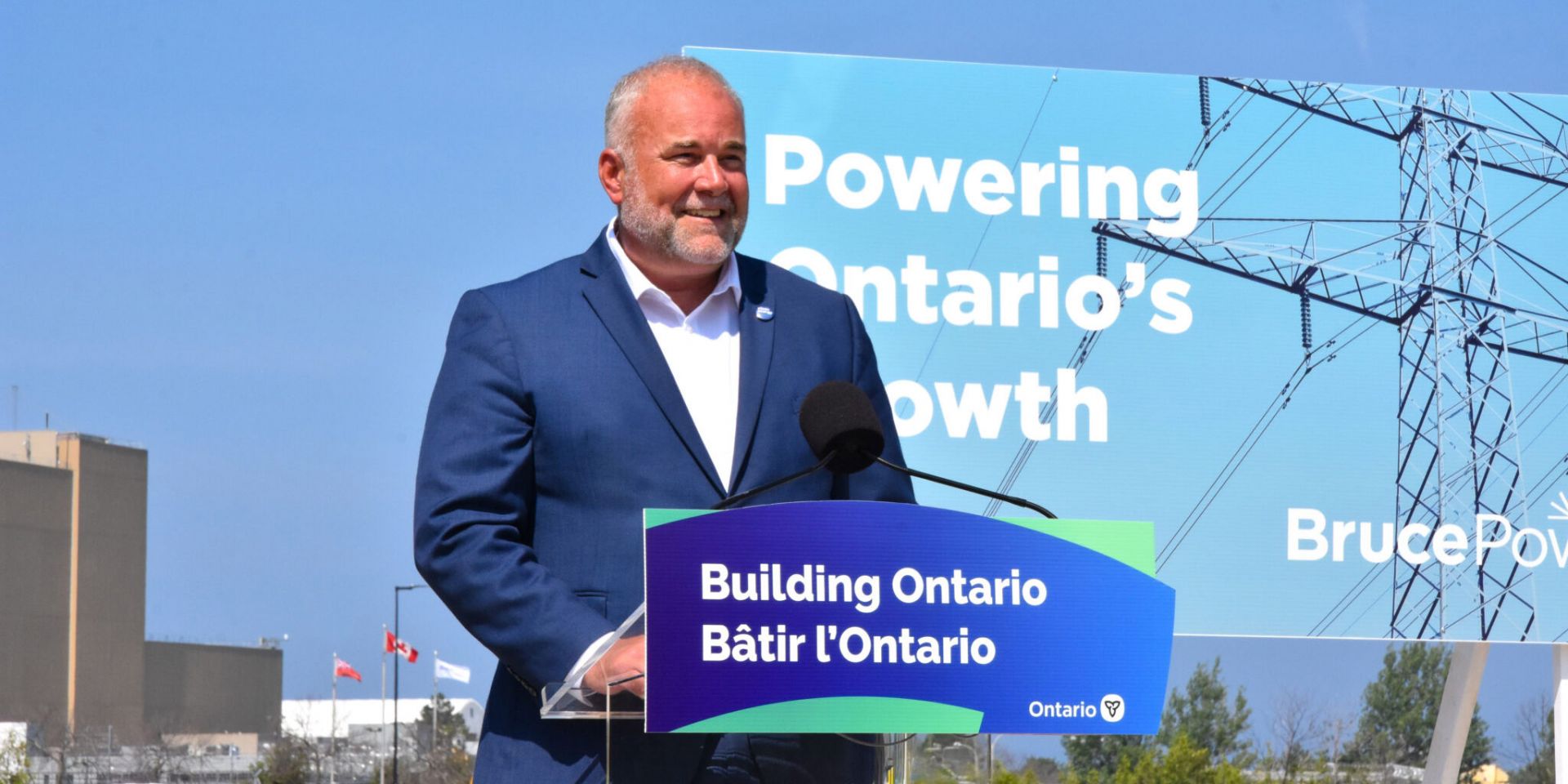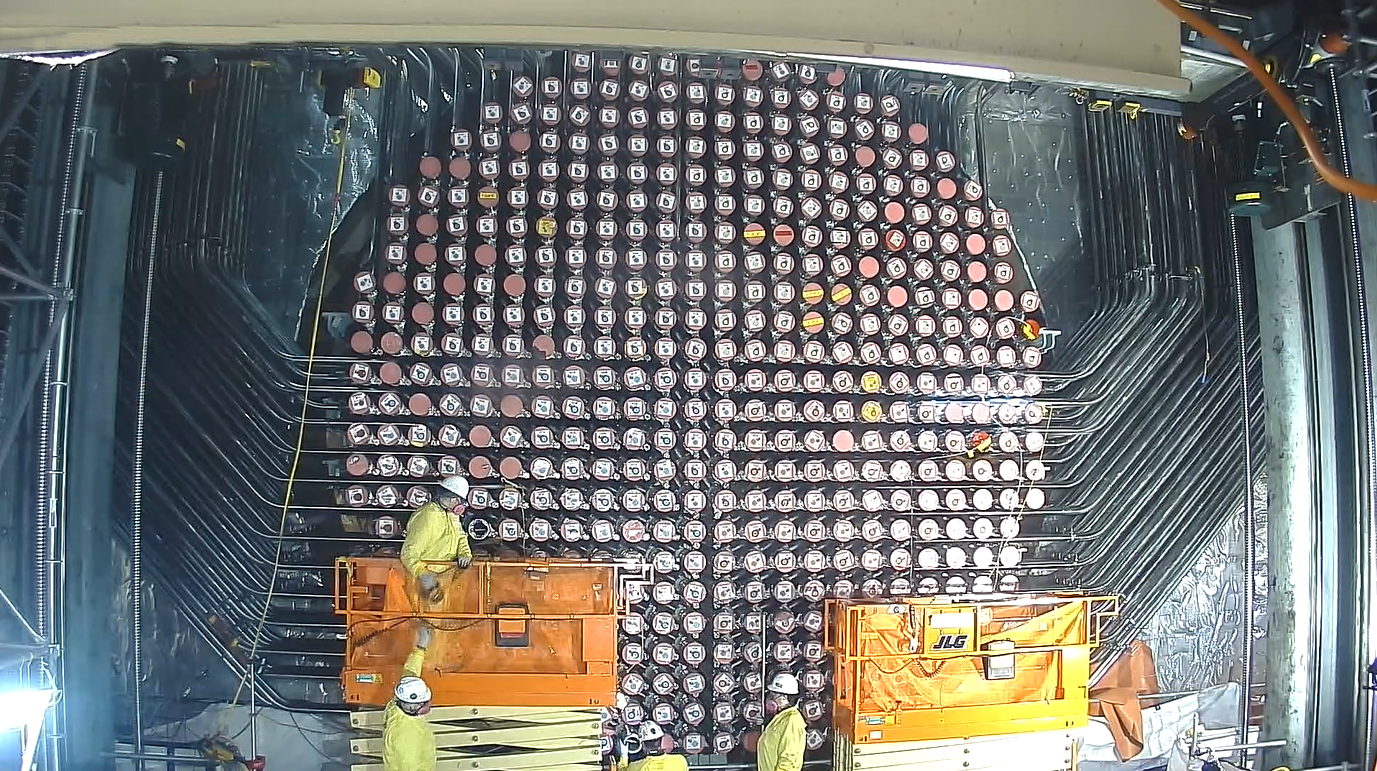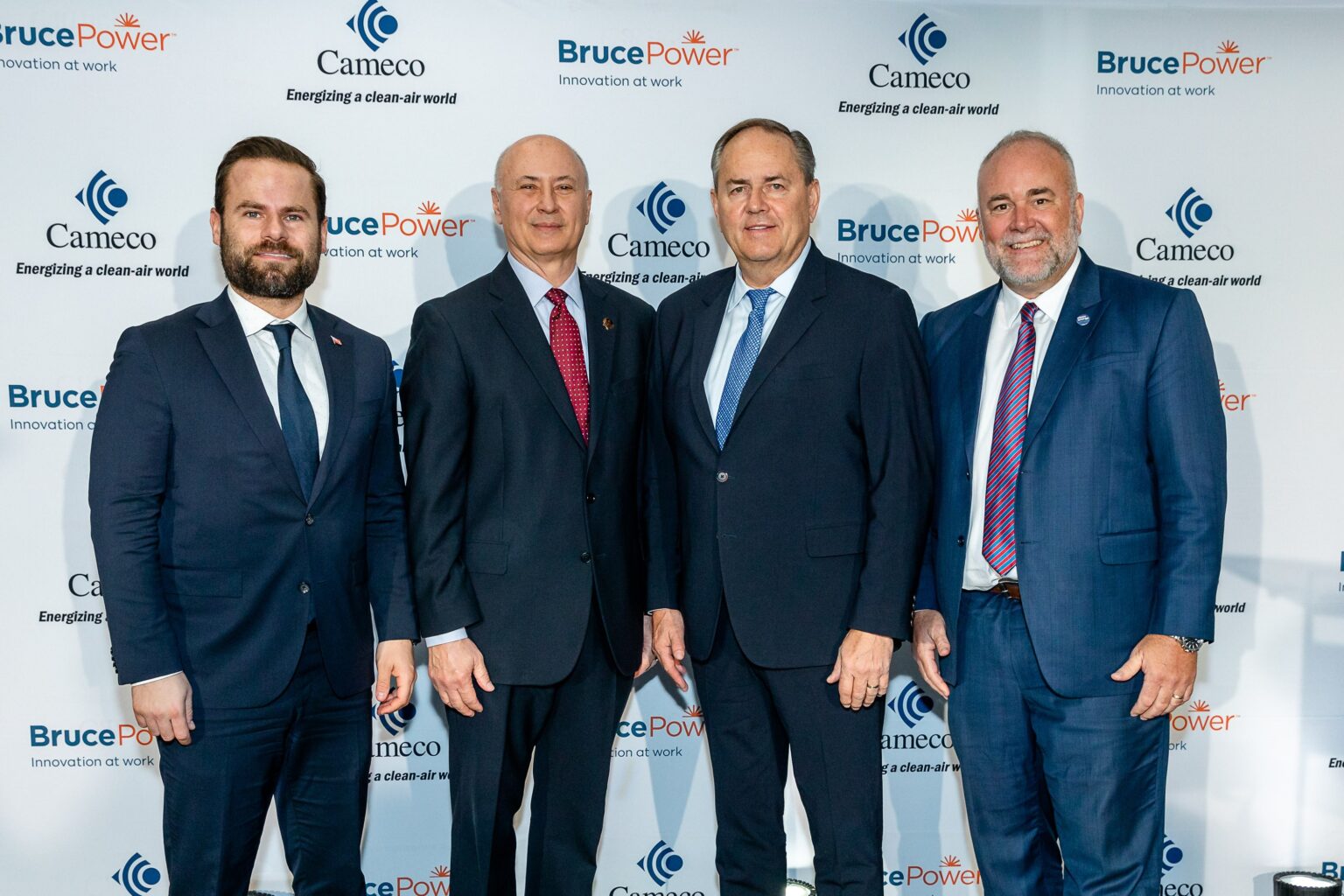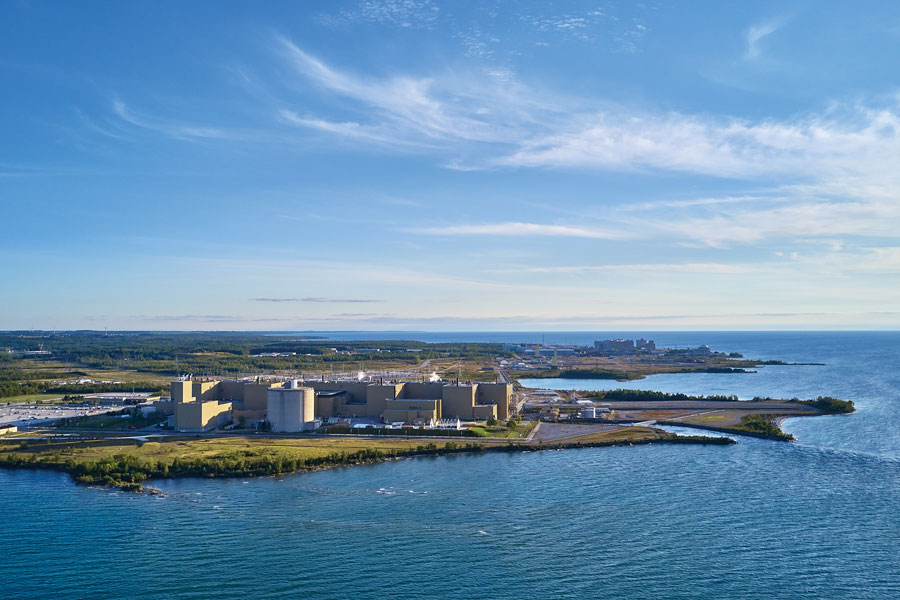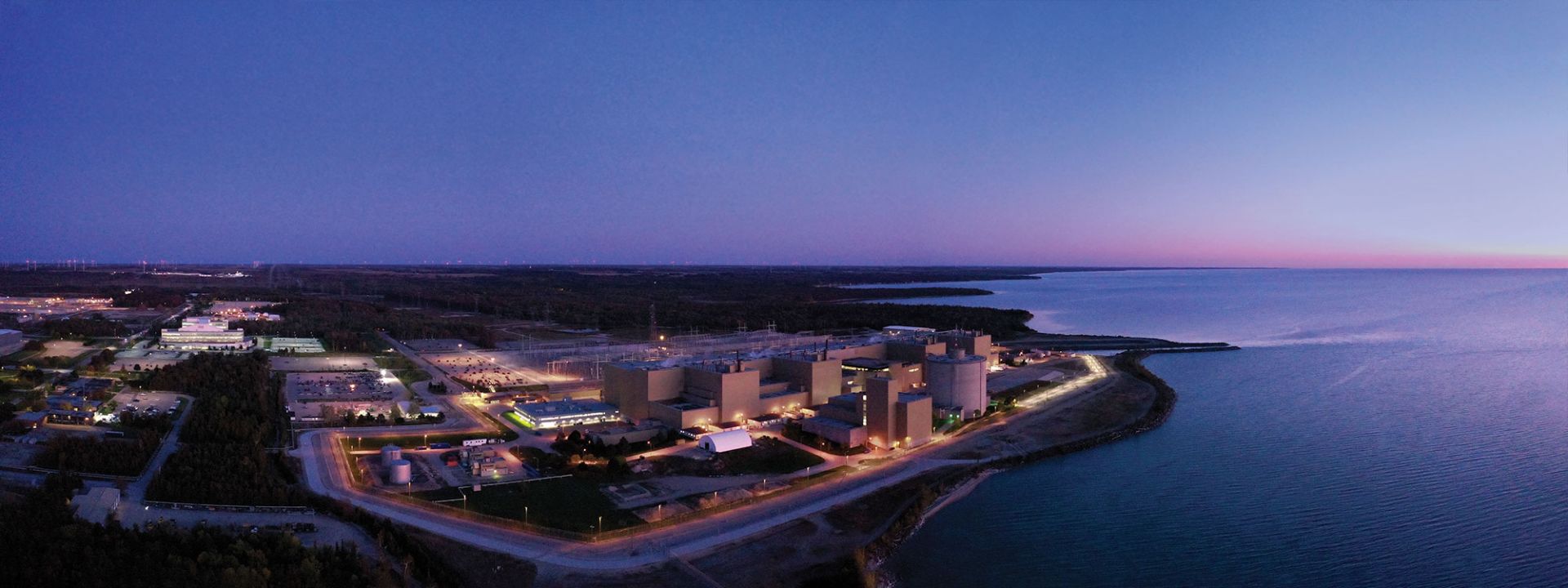The Bruce site currently hosts eight CANDU reactors. (Photo: Bruce Power)
As Bruce Power continues predevelopment work, public input is being sought on the potential Bruce C nuclear power expansion project in Ontario.
Bruce Power recently submitted its initial project description to the Impact Assessment Agency of Canada for an expansion that would add up to 4,800 MWe. Earlier this year, the Canadian government announced up to C$50 million ($36.8 million) in funding for the Bruce C project, which would be Canada’s first major expansion of a large nuclear plant in decades.
The Bruce Power nuclear power plant. (Photo: Bruce Power)
Investment banking on higher demand for SMR and large nuclear reactors
BWX Technologies announced today plans to expand and add advanced manufacturing equipment to its manufacturing plant in Cambridge, Ontario, Canada.
A $36.3 million USD ($50M CAD) expansion will increase the plant’s size by 25 percent—to 280,000 square feet—and another $21.7 million USD ($30M CAD) will be spent on new equipment to increase and accelerate its output of large nuclear components. The investment will increase capacity and create more than 200 long-term jobs for skilled workers, engineers, and support staff, according to the company.
Ontario energy minister Todd Smith (center) and Bruce Power president and CEO Mike Rencheck (right) applaud as Jonathan Wilkinson, Canadian minister of energy and natural resources, announces funding to support Bruce Power’s predevelopment work for expansion. (Photo: Bruce Power)
The Canadian government has announced up to C$50 million ($36.8 million) in funding for predevelopment work to study the feasibility of building 4,800 megawatts of new generating capacity at the Bruce nuclear power plant in Ontario.
Support from the government of Alberta for the Cenovus Energy SMR study was announced September 19 at the World Petroleum Congress in Calgary. From left are Laura Kilcrease, Alberta Innovates CEO; Rhona DelFrari, Cenovus chief sustainability officer and executive vice president, stakeholder engagement; Rebecca Schulz, minister of environment and protected areas; Justin Riemer, Emissions Reduction Alberta CEO; and Nathan Neudorf, minister of affordability and Utilities. (Photo: Government of Alberta)
Canada’s Alberta province is investing C$7 million (about $5.2 million) to help Cenovus Energy study how small modular reactors could be used in northern Alberta to decarbonize oil sands production and what additional information might be needed to pursue their regulatory approval.
Bruce Power operations staff synchronizes Unit 6 to the Ontario electrical grid on September 8. (Photo: Bruce Power)
The ongoing major component replacement (MCR) project at Ontario’s Bruce nuclear power plant reached another milestone last Friday with the reconnection to the grid of the facility’s Unit 6 reactor. According to a release from plant operator Bruce Power, the work was completed ahead of schedule and on budget despite the challenges of the COVID-19 pandemic.
Bruce Power and Nordion will increase Co-60 production at the Bruce nuclear power plant in Ontario. (Photo: Bruce Power)
Bruce Power, the utility in Ontario, Canada, and health-care company Nordion announced that they are working to increase the production of cobalt-60 to meet increasing world market demands. The companies said they will increase the amount of Co-60 Bruce Power is able to produce in its reactors “by innovating a new adjuster component configuration.”
The Bruce nuclear power plant in Ontario, Canada. (Photo: Bruce Power)
Unit 6 at the Bruce nuclear power plant in Kincardine, Ontario, achieved a sustained fission chain reaction over the weekend—a key step in returning the 817-MWe CANDU reactor to commercial operation, Bruce Power announced yesterday.
The Darlington nuclear power plant. (Photo: OPG)
Ontario Power Generation has achieved another milestone in its massive Darlington nuclear plant refurbishment project, and in rather impressive fashion: The Unit 3 CANDU reactor has been reconnected to Ontario’s electricity grid 169 days ahead of schedule, according to a July 18 OPG media release.
Ontario energy minister Todd Smith (left) and Ontario Power Generation president and CEO Ken Hartwick announce plans for three more BWRX-300 units at Darlington. (Photo: OPG)
If we’re in a new nuclear renaissance, its capital would appear to be Ontario. On July 7, just two days after debuting a collaboration with Bruce Power to build up to 4.8 GW of new nuclear generation at the Bruce plant, the government of Ontario announced that it is working with Ontario Power Generation to begin planning and licensing for the deployment of three additional GE Hitachi Nuclear Energy (GEH) BWRX-300 small modular reactors at that utility’s Darlington site.
While speaking at Bruce Power, Ontario minister of energy Todd Smith announces his government’s support for planning and consultation to explore nuclear expansion. (Photo: Bruce Power)
The government of Ontario announced Wednesday that it is starting predevelopment work with Bruce Power—operator of the eight-unit Bruce nuclear plant—to site the first large-scale nuclear build in Canada in more than thirty years.
From left: David Piccini, Ontario’s minister of environment, conservation, and parks; Mike Rencheck, president and CEO, Bruce Power; Tim Gitzel, president and CEO, Cameco; and Todd Smith, Ontario’s minister of energy. (Photo: Bruce Power)
Canadian firms Cameco and Bruce Power have announced a 10-year extension of their long-term exclusive nuclear fuel supply arrangements, securing power generation from the eight-unit 6,507-MWe Bruce nuclear plant through 2040.
The Bruce nuclear power plant. (Photo: Bruce Power)
Canada’s Bruce Power, operator of Ontario’s eight-unit Bruce nuclear power plant, has announced the issuance of C$600 million (about $446.3 million) in green bonds in support of the company’s net-zero-by-2027 goal. (Investopedia defines green bonds as fixed-income instruments specifically earmarked to raise money for environmentally friendly projects.)
The Bruce Power A and B nuclear power plants. (Photo: CNSC)
Canada’s Bruce Power, operator of the eight-unit Bruce nuclear plant in Kincardine, Ontario, has announced a “made-in-Ontario solution” to the net-zero challenges faced by industries: allowing new incremental nuclear output to be accredited for an avoided emissions benefit.
Bruce's Unit 7 is now producing Lutetium-177, used in targeted cancer therapeutics. (Photo: Bruce Power)
An international collaboration between Bruce Power, Isogen (a Kinectrics and Framatome company), and ITM Isotope Technologies Munich SE (ITM) announced they have begun commercial production of lutetium-177 using Unit 7 of the Bruce nuclear power plant in Kincardine, Ontario. According to the companies, this marks the first time a commercial power reactor has been used to commercially produce short-lived medical radioisotopes.
The Bruce plant’s Unit 6 upper feeder cabinet. (Photo: Bruce Power)
As part of its “Made in Ontario” strategy announced last year, Bruce Power has awarded a contract valued at C$130 million (about US$100.8 million) to BWXT Canada in support of the ongoing major component replacement (MCR) project at the utility’s eight-unit Bruce nuclear plant.
The new IPS installed in Bruce Power’s Unit 7 will produce Lu-177 for treating cancer. (Photo: Bruce Power)
An international collaboration between Bruce Power, Isogen (a joint venture of Kinectrics and Framatome), and ITM Isotope Technologies Munich SE, announced a milestone marking the first time that lutetium-177, a short-lived medical radioisotope, has been produced in a commercial nuclear power reactor.
